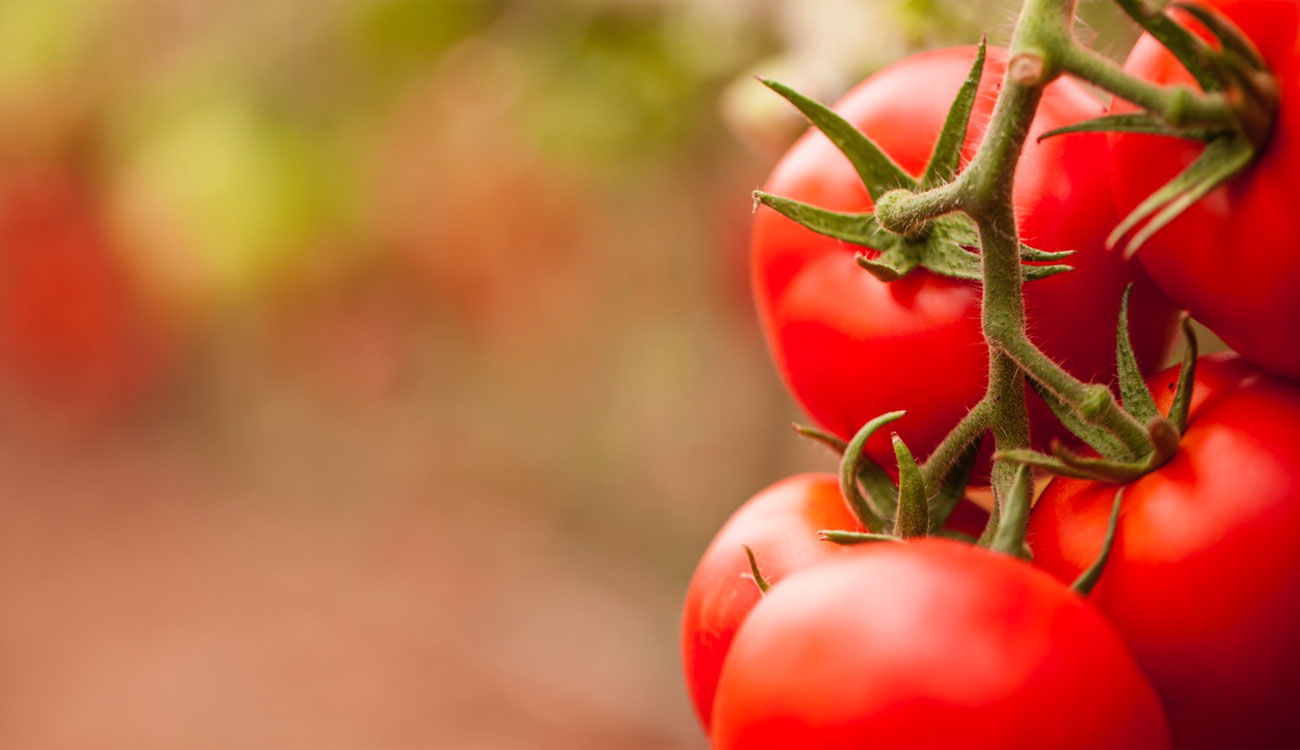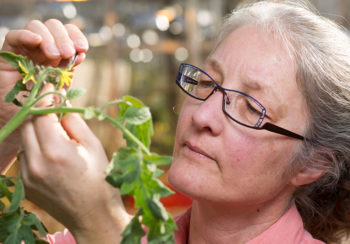In the world of fruits and vegetables, breeders focus their work on developing plant varieties to market that satisfy consumer demand.
At the University of Georgia, horticulture professor Esther van der Knaap leads a team of researchers who are studying variations in tomato shape and size. Their hope is to pass on genetic and molecular findings to breeders, contributing to the tomato industry’s $2 billion impact on our nation’s economy.
From the small grape tomatoes preferred in salads to the large beefsteaks perfect for slicing, it’s variety that the market demands. And an understanding of the genetic variations that affect shape and size can have everyday applications in the food retail sector. This understanding is also critical in sustaining the agricultural industry, as mechanical harvesters require firm, square-like tomatoes that easily stay on conveyer belts.
What makes the tomato particularly valuable to her research is the simple way in which its genetic material is organized, the availability of many varieties and wild species, and the ease of editing its genome. That means her team can more easily identify the specific genes that help determine fruit shape and size. And with Georgia’s uniquely robust infrastructure surrounding plant research, van der Knaap has been able to take an even closer look at the fruit’s molecular and cellular underpinnings.
“As we started domesticating plants and animals, we made selections and bred species based on observable characteristics. We can track how this process happened, when the mutations arose and which human societies selected them.”
– Esther van der Knaap, Professor of Horticulture
“We can look at the size and shape of the tomatoes,” she says, “but we really want to look inside the fruit to study the cellular structures.” This, coupled with van der Knaap’s efforts to understand gene variation, helps breeders understand how early wild tomatoes evolved into different shapes and sizes and how those variations or gene mutations can inform new varieties.
This became even more prevalent when a National Science Foundation grant and Georgia provided van der Knaap the opportunity to study the modern tomato’s closest wild relative, the currant tomato, and the earliest domesticated type, the cherry tomato. Her team discovered more fruit size variation than previously anticipated, potentially leading to the uncovering of new gene mutations that were previously unknown. This information is providing valuable insight into how the tomato crop has evolved over the millennia.
“It’s a view into history, looking back thousands of generations when we transitioned from a hunter-gather society to an agrarian society,” she says. “As we started domesticating plants and animals, we made selections and bred species based on observable characteristics. In studying these early steps, we can track how this process happened, when the mutations arose and which human societies selected them.”
As the team continues its work, the hope is that this knowledge will help breeders around the world better understand how to create seeds that will sustain different agricultural communities. And while van der Knaap’s research directly concerns tomatoes, her findings have implications for our understanding of other plants. With Georgia’s extensive resources and emphasis on plant research, this critical expertise will lead the way into new insights that will contribute to the lucrative business of what makes fruits and vegetables so varied—and so delicious.

About the Researcher
Esther van der Knaap
Professor
Department of Horticulture
College of Agricultural & Environmental Sciences






